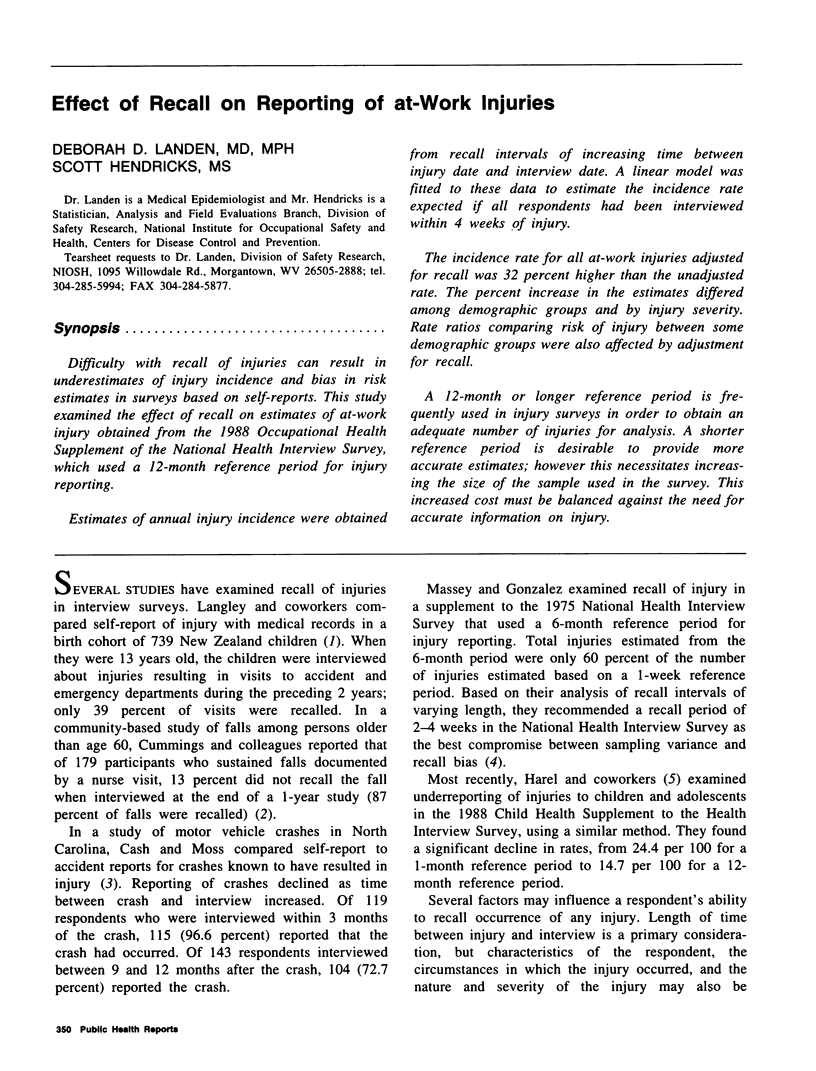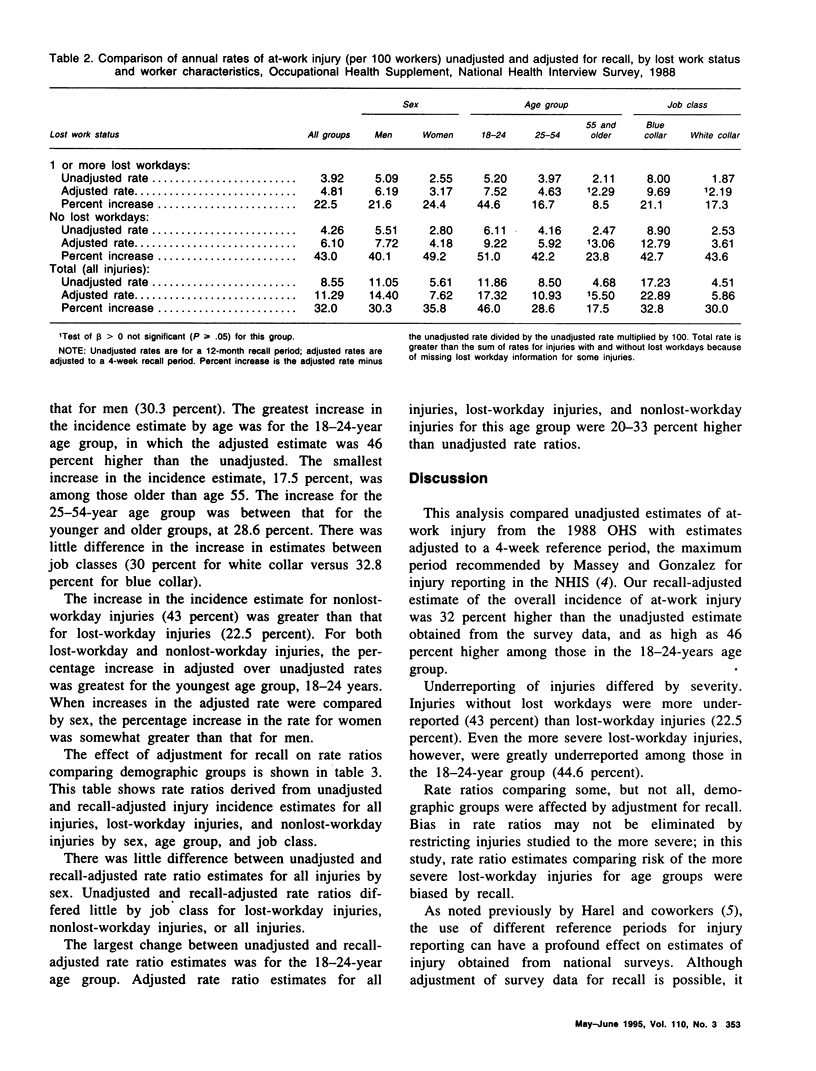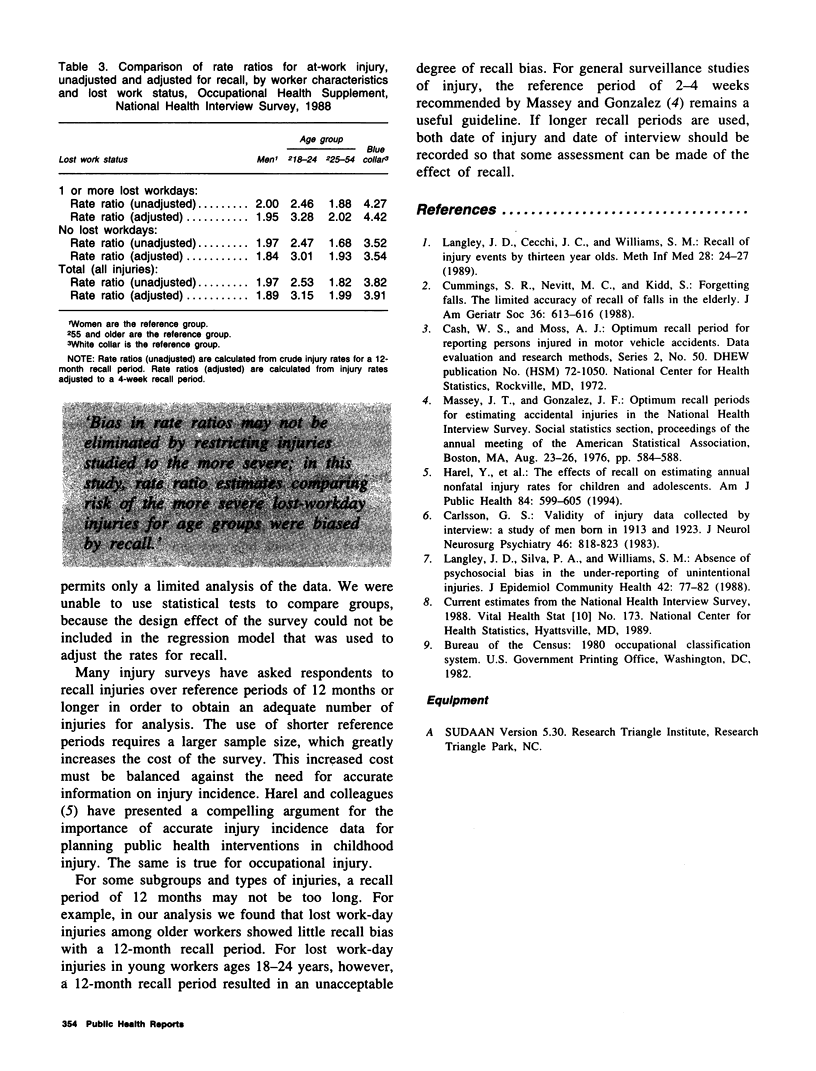Abstract
Difficulty with recall of injuries can result in underestimates of injury incidence and bias in risk estimates in surveys based on self-reports. This study examined the effect of recall on estimates of at-work injury obtained from the 1988 Occupational Health Supplement of the National Health Interview Survey, which used a 12-month reference period for injury reporting. Estimates of annual injury incidence were obtained from recall intervals of increasing time between injury date and interview date. A linear model was fitted to these data to estimate the incidence rate expected if all respondents had been interviewed within 4 weeks of injury. The incidence rate for all at-work injuries adjusted for recall was 32 percent higher than the unadjusted rate. The percent increase in the estimates differed among demographic groups and by injury severity. Rate ratios comparing risk of injury between some demographic groups were also affected by adjustment for recall. A 12-month or longer reference period is frequently used in injury surveys in order to obtain an adequate number of injuries for analysis. A shorter reference period is desirable to provide more accurate estimates; however this necessitates increasing the size of the sample used in the survey. This increased cost must be balanced against the need for accurate information on injury.
Full text
PDF




Selected References
These references are in PubMed. This may not be the complete list of references from this article.
- Carlsson G. S. Validity of injury data collected by interview: a study of men born in 1913 and 1923. J Neurol Neurosurg Psychiatry. 1983 Sep;46(9):818–823. doi: 10.1136/jnnp.46.9.818. [DOI] [PMC free article] [PubMed] [Google Scholar]
- Cummings S. R., Nevitt M. C., Kidd S. Forgetting falls. The limited accuracy of recall of falls in the elderly. J Am Geriatr Soc. 1988 Jul;36(7):613–616. doi: 10.1111/j.1532-5415.1988.tb06155.x. [DOI] [PubMed] [Google Scholar]
- Harel Y., Overpeck M. D., Jones D. H., Scheidt P. C., Bijur P. E., Trumble A. C., Anderson J. The effects of recall on estimating annual nonfatal injury rates for children and adolescents. Am J Public Health. 1994 Apr;84(4):599–605. doi: 10.2105/ajph.84.4.599. [DOI] [PMC free article] [PubMed] [Google Scholar]
- Langley J. D., Cecchi J. C., Williams S. M. Recall of injury events by thirteen year olds. Methods Inf Med. 1989 Jan;28(1):24–27. [PubMed] [Google Scholar]
- Langley J. D., Silva P. A., Williams S. M. Absence of psychosocial bias in the under-reporting of unintentional childhood injuries. J Epidemiol Community Health. 1988 Mar;42(1):76–82. doi: 10.1136/jech.42.1.76. [DOI] [PMC free article] [PubMed] [Google Scholar]


